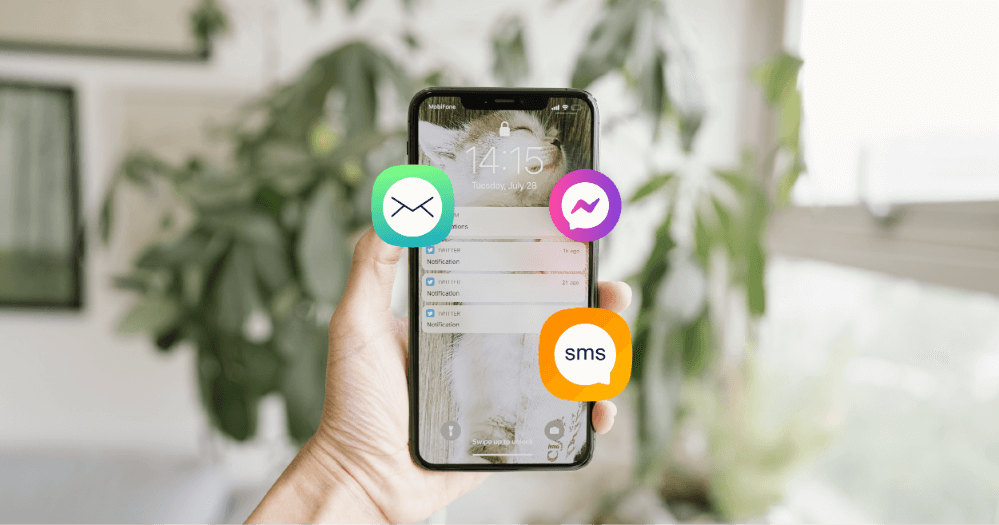📑Table of Contents:
- Why SMS is Vital in Omnichannel Marketing
- SMS and Email: A Powerful Duo
- SMS and Push Notifications
- SMS and Social Media
- SMS and Customer Service Channels
- Benefits of Integrating SMS in Omnichannel Campaigns
- Strategies for Seamless SMS Integration
- Real-World Examples
- The Future of SMS in Omnichannel Marketing
- Final Thoughts

Marketing today is not about one channel. Customers move between email, SMS, apps, and social platforms all day long. To keep up, businesses need an omnichannel strategy that delivers a consistent experience everywhere.
SMS plays a critical role in this approach. With open rates as high as 98%, it bridges the gap between other channels and provides immediate engagement. When combined with email, push notifications, and even social media, SMS becomes the glue that holds the customer journey together.
In this guide, we’ll explore why SMS is a powerful omnichannel tool, how it integrates with other channels, and what strategies help brands deliver seamless experiences.
Why SMS is Vital in Omnichannel Marketing
Email campaigns are great for long-form content. Push notifications are perfect for app users. Social media builds awareness. Yet, SMS provides instant reach and unmatched visibility.
Unlike other channels, SMS doesn’t require internet access. Messages land directly in the customer’s pocket. This makes it a reliable way to confirm orders, send reminders, or deliver time-sensitive offers.
More importantly, SMS fits naturally into the omnichannel mix. It doesn’t replace email or push; instead, it enhances them. By using SMS alongside other channels, businesses can meet customers wherever they are.
SMS and Email: A Powerful Duo
Email and SMS share similarities, but they work best together. Email allows for detailed storytelling, visuals, and links. SMS, however, delivers short and urgent updates.
Consider an e-commerce campaign. The brand can send a product launch announcement by email with images, descriptions, and pricing. Minutes later, an SMS reminder can nudge the subscriber to check the email. This two-step approach reinforces the message while creating urgency.
Additionally, SMS can rescue abandoned carts. While email provides detailed cart recovery offers, SMS can send a quick reminder:
“Your items are waiting! Complete your order today and enjoy free shipping.”
Together, they create a balance between detail and immediacy.
SMS and Push Notifications
Push notifications work well inside apps, but they rely on customers enabling them. SMS, on the other hand, doesn’t need app permissions. By combining both, brands can ensure no message gets missed.
For example, a food delivery service might send a push notification about an ongoing discount. If the customer has push disabled, SMS acts as a backup. Even when both are enabled, using SMS for critical alerts—like order updates—keeps customers engaged without overwhelming them.
Timing is important too. Push notifications are great for in-app activity. SMS is better for urgent updates outside the app. Knowing when to use each channel makes the experience seamless.
SMS and Social Media
Social platforms like Facebook, Instagram, and TikTok dominate attention. Yet, they don’t always drive direct conversions. This is where SMS can complement social marketing.
A campaign might start with a social post announcing a sale. Interested users click a link to sign up for SMS alerts. Once subscribed, they receive personalized discounts and reminders right on their phones.
This integration turns social engagement into long-term retention. Instead of relying solely on social algorithms, brands can build a direct line of communication through SMS.
SMS and Customer Service Channels
Customer service is an essential part of omnichannel marketing. Email, live chat, and phone calls all serve a purpose. However, SMS adds speed and convenience.
For example, customers can receive appointment confirmations, delivery updates, or even support tickets via SMS. If a package is delayed, an SMS update reassures the customer immediately.
This quick response builds trust and reduces frustration. When customers feel informed, loyalty increases.
Benefits of Integrating SMS in Omnichannel Campaigns
When SMS works alongside other channels, businesses enjoy significant advantages:
- Higher engagement rates: SMS cuts through noise and drives action.
- Better customer experience: Consistent messaging reduces confusion.
- Improved retention: Direct, timely communication fosters loyalty.
- More conversions: Urgent nudges complement detailed campaigns.
- Wider reach: SMS ensures delivery even when emails or push fail.
The result is a smoother journey that customers value.
Strategies for Seamless SMS Integration
To make SMS an effective part of omnichannel marketing, businesses need to follow smart strategies:
- Keep messaging consistent – Use the same tone and branding across channels.
- Segment your audience – Tailor SMS campaigns to specific groups.
- Use SMS for urgency – Reserve it for time-sensitive alerts or offers.
- Sync data across platforms – Ensure customer profiles update in real time.
- Balance frequency – Don’t overwhelm customers with duplicate messages.
- Track performance – Measure SMS impact alongside email, push, and social.
- Offer opt-in options – Let customers choose preferred channels.
- Automate campaigns – Use workflows to trigger SMS at the right stage.
By applying these practices, SMS blends smoothly into the customer journey without feeling disruptive.
Real-World Examples
Many brands already use SMS in omnichannel campaigns.
- Retailers: Combine email product launches with SMS reminders to drive sales.
- Healthcare providers: Send appointment details by email and follow up with SMS confirmations.
- Airlines: Use email for booking details, push for gate changes, and SMS for urgent delays.
- Restaurants: Post deals on social media, then deliver exclusive SMS coupons.
These examples show how SMS strengthens other channels instead of competing with them.
The Future of SMS in Omnichannel Marketing
As technology evolves, SMS will only grow in importance. Rich Communication Services (RCS) will allow for images, buttons, and interactive features within text messages. AI will optimize timing and personalization across channels.
Integration with CRM systems will ensure all customer data flows seamlessly. This will make SMS even more powerful as part of a unified marketing approach.
Brands that embrace SMS within their omnichannel mix will stay ahead. Those that rely on just one or two channels may struggle to meet rising customer expectations.

Final Thoughts
Omnichannel marketing is not about choosing one channel over another. It’s about creating a seamless experience across all touchpoints. SMS plays a key role because it is fast, reliable, and direct.
When integrated with email, push notifications, social media, and customer service, SMS creates a stronger, more connected customer journey. Businesses that harness this power in 2025 will enjoy better engagement, higher conversions, and long-term loyalty.
